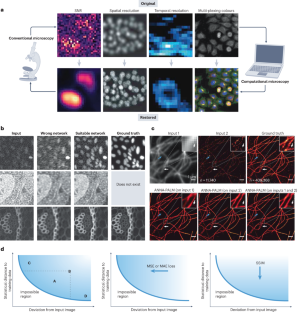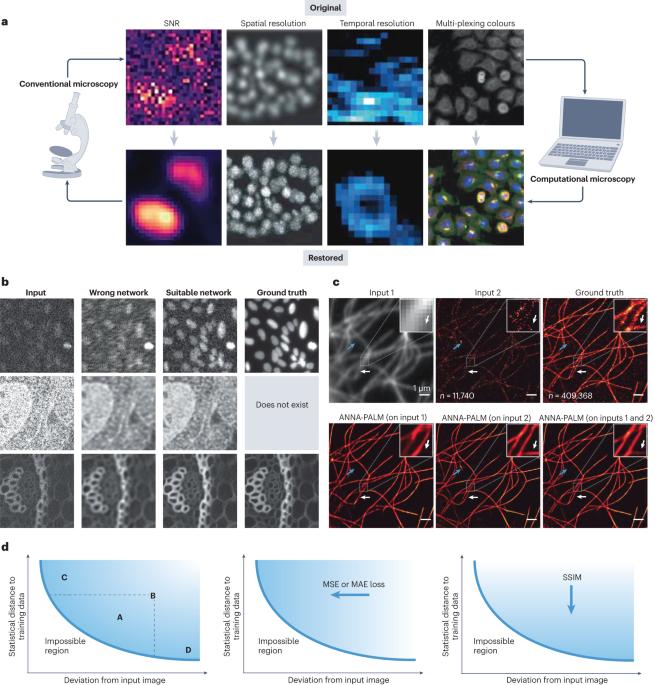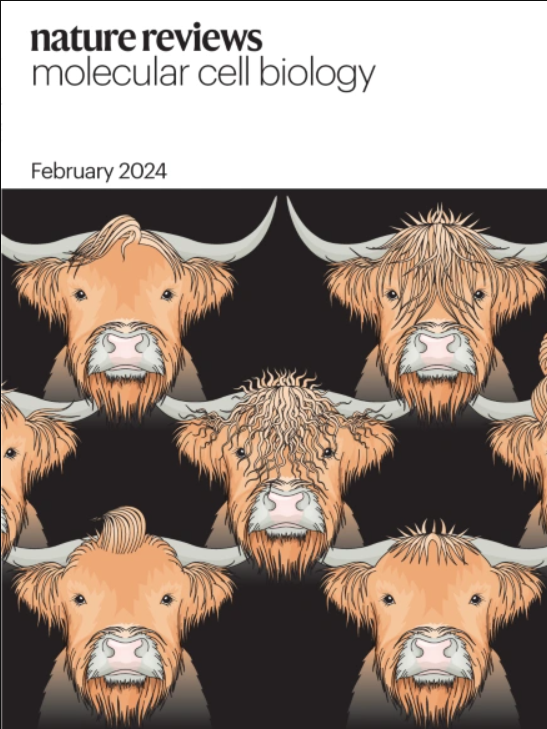Live-cell imaging powered by computation
IF 81.3
1区 生物学
Q1 CELL BIOLOGY
引用次数: 0
Abstract
The proliferation of microscopy methods for live-cell imaging offers many new possibilities for users but can also be challenging to navigate. The prevailing challenge in live-cell fluorescence microscopy is capturing intra-cellular dynamics while preserving cell viability. Computational methods can help to address this challenge and are now shifting the boundaries of what is possible to capture in living systems. In this Review, we discuss these computational methods focusing on artificial intelligence-based approaches that can be layered on top of commonly used existing microscopies as well as hybrid methods that integrate computation and microscope hardware. We specifically discuss how computational approaches can improve the signal-to-noise ratio, spatial resolution, temporal resolution and multi-colour capacity of live-cell imaging. The prevailing challenge in live-cell fluorescence microscopy is capturing intra-cellular dynamics while preserving cell viability. Alongside developments of microscopy hardware, computational methods — especially those based on machine learning — are powerful tools to improve the signal-to-noise ratio, spatial resolution, temporal resolution and multi-colour capacity of live-cell imaging.


用计算驱动活细胞成像
用于活细胞成像的显微镜方法层出不穷,为用户提供了许多新的可能性,但在操作过程中也会遇到很多挑战。活细胞荧光显微镜的主要挑战是在保持细胞活力的同时捕捉细胞内动态。计算方法有助于应对这一挑战,目前正在改变活体系统中可能捕捉到的动态。在本综述中,我们将讨论这些计算方法,重点是基于人工智能的方法,这些方法可以叠加到常用的现有显微镜以及将计算与显微镜硬件相结合的混合方法之上。我们将具体讨论计算方法如何提高活细胞成像的信噪比、空间分辨率、时间分辨率和多色能力。
本文章由计算机程序翻译,如有差异,请以英文原文为准。
求助全文
约1分钟内获得全文
求助全文
来源期刊
CiteScore
173.60
自引率
0.50%
发文量
118
审稿时长
6-12 weeks
期刊介绍:
Nature Reviews Molecular Cell Biology is a prestigious journal that aims to be the primary source of reviews and commentaries for the scientific communities it serves. The journal strives to publish articles that are authoritative, accessible, and enriched with easily understandable figures, tables, and other display items. The goal is to provide an unparalleled service to authors, referees, and readers, and the journal works diligently to maximize the usefulness and impact of each article. Nature Reviews Molecular Cell Biology publishes a variety of article types, including Reviews, Perspectives, Comments, and Research Highlights, all of which are relevant to molecular and cell biologists. The journal's broad scope ensures that the articles it publishes reach the widest possible audience.

 求助内容:
求助内容: 应助结果提醒方式:
应助结果提醒方式:


